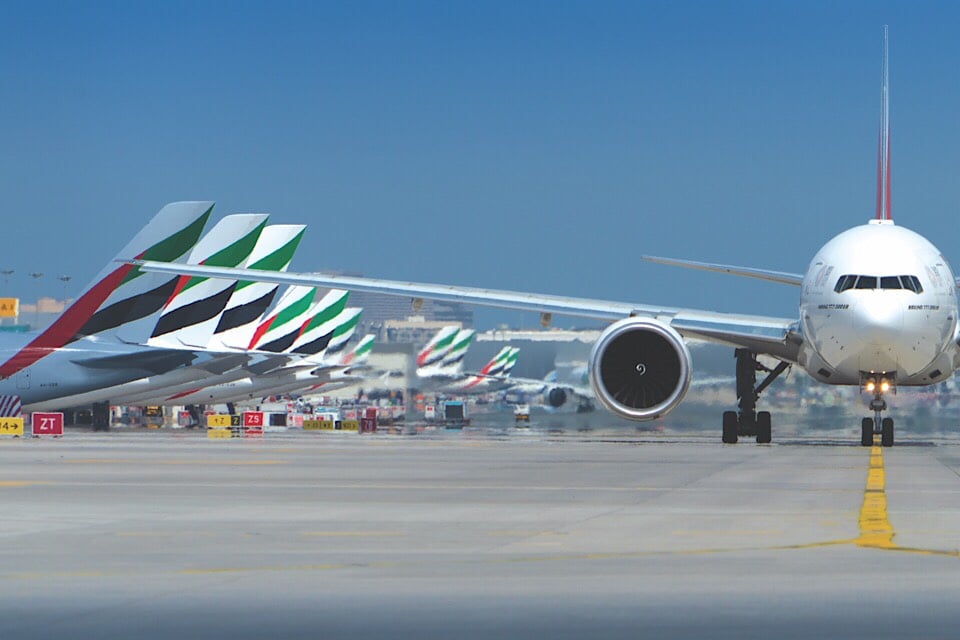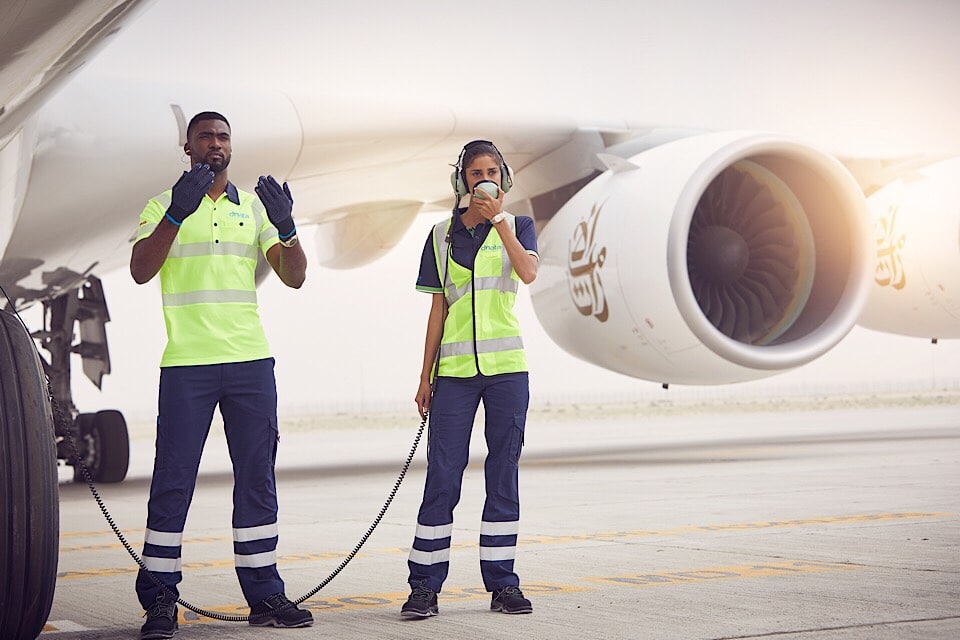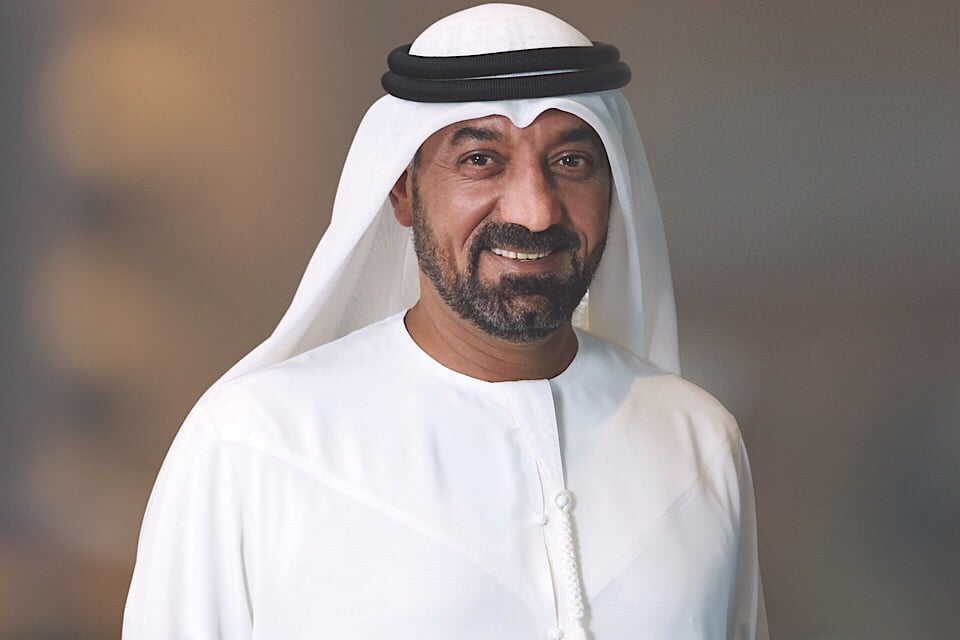Aviation
Emirates reports a profit US$ 631 million for its 2018/19 financial year

How much did Emirates make in 2019?
Group records 31st consecutive year of profit of AED 2.3 billion (US$ 631 million)
- Strong business growth leading to a record revenue of more than AED 109 billion (US$ 29.8 billion)
- Solid cash balance of AED 22.2 billion (US$ 6.0 billion)
- Declares a dividend of AED 500 million (US$ 136 million) to the Investment Corporation of Dubai.

dnata reports its highest ever profit of AED 1.4 billion (US$ 394 million) for its 2018/19 financial year, which includes gain from a one-time sale transaction of its HRG stake. Revenue grew 10% on the back of business growth and acquisitions, with international businesses now accounting for 70% of revenue
Emirates reports a profit of AED 871 million (US$ 237 million), 69% down from the previous year
- Revenue increases by 6% to AED 97.9 billion (US$ 26.7 billion), supported by steady passenger and cargo performance
- Airline capacity crosses 63 billion ATKM with a net addition of 2 new aircraft to the fleet

HH Sheikh Ahmed bin Saeed Al Maktoum, Chairman and Chief Executive, Emirates airline and Group, announced Emirates and dnata’s 2018/19 financial performance, including the Group’s 31st consecutive year of profit.
What is the profit of Emirates?
dnata makes record profit of AED 1.4 billion (US$ 394 million), which includes AED 321 million (US$ 88 million) gain from one-time sale of HRG stake
- Revenue increases by 10% to AED 14.4 billion (US$ 3.9 billion), reflecting further business expansion with international business now accounting for 70% of revenue
- Expands global footprint with acquisition of Qantas catering in Australia and 121 Inflight catering business in the Americas, adds new facilities and service capabilities across its airport operations, catering, and travel services divisions
-
How did Emirates create value for customers?
In 2018-19, the Group collectively invested AED 14.6 billion (US$ 3.9 billion) in new aircraft and equipment, the acquisition of companies, modern facilities, the latest technologies, and staff initiatives, a significant increase over last year’s investment spend of AED 9.0 billion (US$ 2.5 billion).
In February, Emirates announced a commitment for 40 A330-900s and 30 A350-900s worth US$ 21.4 billion at list prices in an agreement signed with Airbus, to be delivered from 2021 and 2024 respectively. The airline will also receive 14 more A380 deliveries from 2019 until the end of 2021, taking its total A380 order book to 123 units.
dnata’s key investments during the year included: the acquisitions of Q Catering and Snap Fresh in Australia, and 121 Inflight Catering in the US; the buy-out of shares to become the owner of Dubai Express, Freightworks LLC; and a 51% majority stakeholder of Bolloré Logistics LLC, UAE; the build of new cargo and pharma handling facilities in Belgium, the US, the UK, the Netherlands, Australia, Singapore and Pakistan; the acquisition of German tour operator Tropo, and a majority stake in BD4travel, a company providing artificial intelligence driven IT solutions in the travel sector.
Across its more than 120 subsidiaries, the Group’s total workforceincreased by 2% to 105,286, representing over 160 different nationalities, mainly influenced by dnata’s new acquisitions and its international business expansion.
Emirates’ total passenger and cargo capacity crossed the 63 billion mark, to 63.3 billion ATKMs at the end of 2018-19, cementing its position as the world’s largest international carrier. The airline moderately increased capacity during the year over 2017-18 by 3%, with a focus on yield improvement.
Emirates received 13 new aircraft during the financial year, comprising of seven A380s and six Boeing 777-300ERs, including the last 777-300ER on its order book. The next 777 delivery is planned for 2020, when Emirates receives its first 777X aircraft.
During 2018-19, Emirates phased out 11 older aircraft, bringing its total fleet count to 270 at the end of March. This fleet roll-over involving 24 aircraft was again one of the largest managed in a year, keeping Emirates’ average fleet age at a youthful 6.1 years.
It reinforces Emirates’ strategy to operate a young and modern fleet, and live up to its “Fly Better” brand promise as modern aircraft are better for the environment, better for operations, and better for customers.
During the year, Emirates launched three new passenger destinations: London Stansted (UK), Santiago (Chile) and Edinburgh (Scotland), and reinstated services to Sabiha Gokcen (Turkey). It also added flight capacity to 14 existing destinations and upgraded capacity to six cities, offering customers more choice of flight timings and onward connections
The full 2018-19 Annual Report of the Emirates Group – comprising Emirates, dnata and their subsidiaries – is available at:https://www.emirates.com/

Aviation
COMAC Unveils Plans for the C929 to Rival Airbus and Boeing

After the success of China’s first C919 aircraft, the country is setting its sights on developing a larger plane. COMAC (Commercial Aircraft Corporation of China) has officially confirmed plans to build a widebody aircraft, marking a significant step in its aircraft lineup.
Traditionally, Airbus and Boeing dominate the widebody aircraft market, with decades of expertise in developing planes and engines capable of carrying heavy payloads. China, which currently relies on imported engines, is now aiming to challenge these giants with its own widebody jet, the C929, designed to compete with the Airbus A350 and Boeing 777.
American Airlines Is Looking for Flight Attendants: Apply Now
The C929 will be China’s first independently developed long-range widebody aircraft. It adheres to international airworthiness standards and boasts independent intellectual property rights. The baseline version is designed to seat 280 passengers and offers a range of 12,000 kilometers, catering to global demand for both regional and international air travel.
Russia, which also needs reliable narrowbody and widebody aircraft, could become a key customer for the C929. Additionally, China plans to target the broader Asian market as it continues to expand its aviation capabilities.
Close Call at Heathrow: BA Flight Narrowly Escapes Drone Collision
China’s aviation progress includes the ARJ21 (now called C909), a regional jet with 100 seats for shorter routes, and the C919, a narrowbody jet with 180 seats designed to rival the Boeing 737 MAX and Airbus A320. Both models have found increasing demand in the domestic market.
At China’s largest air show in Zhuhai, COMAC announced that Air China will be the launch customer for the C929 widebody jet, though details about order size and delivery timelines were not disclosed.
Other major deals announced by COMAC include:
- Hainan Airlines: Firm orders for 60 C919 and 40 C909 regional jets.
- Colorful Guizhou Airlines: 30 C909 jets, with 20 firm orders and 10 provisional agreements.
The C929, renamed from the CR929 after Russia withdrew from the joint development project in 2023, is expected to carry 280–400 passengers with a range of 12,000 kilometers, competing directly with Boeing’s 787 Dreamliner.
According to COMAC’s deputy general manager, Tong Yu, the first fuselage section of the C929 is expected by September 2027, with prototype test flights anticipated soon after.
-

 Aviation2 months ago
Aviation2 months agoMicrosoft Flight Simulator Raises $3 Million to Bring Back the An-225 Mriya
-

 Airlines2 months ago
Airlines2 months agoQantas Engineers Stage Walkout Over Cost of Living Concerns
-

 Airlines2 months ago
Airlines2 months agoQatar Citizens Can Travel to the United States Without a Visa
-

 Aviation2 months ago
Aviation2 months agoQatar Airways bans these new Electronic Devices on plane
-

 Airlines2 months ago
Airlines2 months agoJapan Airlines Rolls Out Free Domestic Flights to International Passengers
-

 Defence2 months ago
Defence2 months agoWhich Country Has the Largest Fleet of Fighter Aircraft?
-

 Airport2 months ago
Airport2 months agoWestern Sydney Airport Welcomes Its First Plane After 6 Years of construction
-

 Aviation2 months ago
Aviation2 months agoDid you know ? Once Boeing 747 carried 1088 passenger in 1991








